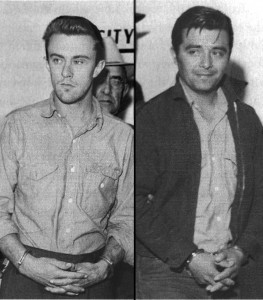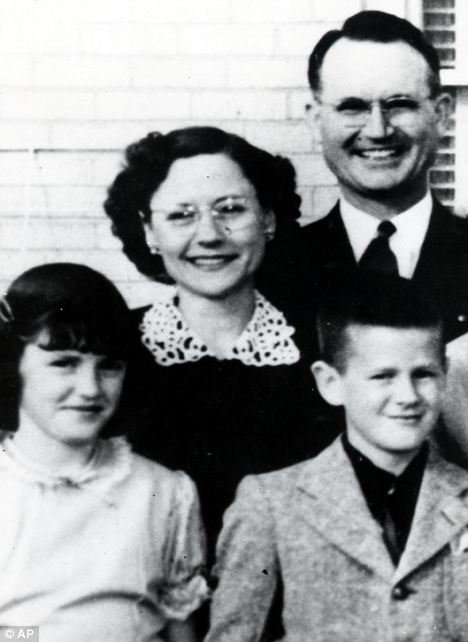 Truman Capote’s In Cold Blood was published in 1966 as, ostensibly, the first book in a new genre: the true crime novel. It chronicles the 1959 murder of the Clutter family by two recently-released convicts named Richard Hickock and Perry Smith. It is a well known and controversial book that took the nation by storm when first published and that has enthralled and troubled readers ever since.
Truman Capote’s In Cold Blood was published in 1966 as, ostensibly, the first book in a new genre: the true crime novel. It chronicles the 1959 murder of the Clutter family by two recently-released convicts named Richard Hickock and Perry Smith. It is a well known and controversial book that took the nation by storm when first published and that has enthralled and troubled readers ever since.
While in prison, Hickock and Smith learn of a wealthy Kansas family from another prisoner, Floyd Wells, who used to work for Herb Clutter. He shares that he believes Mr. Clutter has a safe, or something like it, with likely not less than $10,000 in it and any given time. Upon their release, Hickock and Smith drive to the Clutter home, tie up and brutally murder the family of four (including the two teenage children), and then make their way to Mexico. They come back into the States where, a few weeks later, they are arrested after Wells informs the Warden that he thinks the Clutter killers must be Hickock and Smith, seeing as though he had shared with them information about the family. The two are arrested and subsequently hanged for the crime.
Truman Capote and his friend Harper Lee researched the facts surrounding the case and Capote was granted unprecedented access to Hickock and Smith after their arrests. He was also present at the hanging of the two. Two movies have been made depicting the process of Capote’s writing of the book: Capote (2005) and Infamous (2006). The novel itself has been made into a movie more than once. This 1996 version is available on YouTube. I’ll embed it here.
The book is a jarring depiction of human depravity. It must be said that Capote’s work is enthralling and captivating. He certainly attempts to humanize Hickock and Smith, telling in great detail the stories of their lives. At the same time, Capote never shied away from the sheer monstrous wickedness of their actions. I, at any rate, did not feel that he was trying to excuse the murderers, though clearly he was trying to say that these two did not spring out of a vacuum: their pasts contributed to their actions.
I was struck by the various interactions the prisoners had with other characters (again, all more or less based on actual occurrences – the accuracy of the book remains a subject of great debate) on religious matters. Hickock and Smith remain unmoved to the bitter end by the thought of the existence of God and of coming judgment for their sins. Tellingly, the Perry’s attorney attempted to enter this jailhouse painting of Jesus that Perry had done into evidence.
The general idea seemed to be that anybody who could paint such a painting could not be all bad. Regrettably, that is not the case. Lots of people know the image of Jesus without knowing Jesus. Regardless, there is a telling lesson in the defense’s attempt to submit this image of Christ (which the judge did not allow, by the way).
In Cold Blood is a riveting, unsettling account of terrifying acts of brutality committed by two human beings who grew up in tough situations but nonetheless made the decision to take the lives of a good and decent family who did not deserve the fate they met. It is, in my opinion, worthy of consideration. It is a chilling but necessary look at the heart of fallen man.


